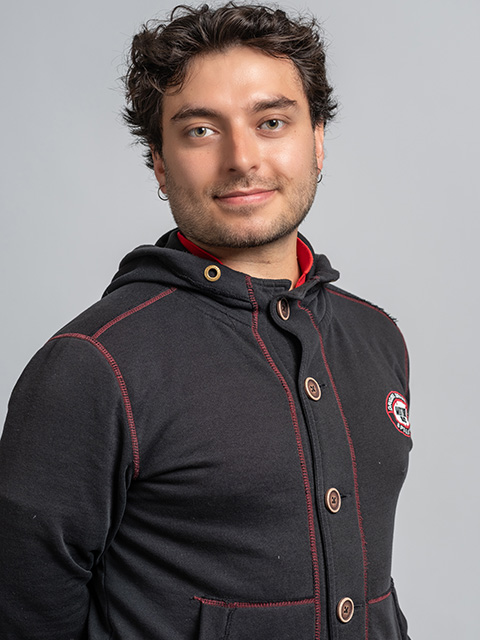Research and expertise
My main research interest is the application of novel experimental techniques for the study of fluid dynamics, in conjunction with statistical frameworks to understand complex flow processes, and its subsequent application to relevant engineering problems.
Currently, my focus is the design, set up and execution of experiments to understand heat and aerosol spread in enclosed spaces. The results of this will have significant impacts on the appropriate design of spaces for thermal comfort, low-energy ventilation solutions and control of air-borne disease spread within buildings.
The experimental techniques I apply to the study of flow phenomena revolves around non-intrusive optical techniques, for the resolution of temporally and spatially resolved velocity and scalar fields. In the past, these techniques have been applied to develop novel, bespoke systems to resolve flow and scalar fields within cylinder arrays meant to represent emergent vegetation; and accelerating pipes, as part of water supply networks; and thermally stratified flows.
Current research activity
- Perform Experimental Validation of numerical models to study the feasibility of novel designs of Natural Ventilation with Heat Recovery systems
- Optical velocimetry experiments to study aerosol dispersal in enclosed spaces
- Advanced complex decomposition of velocimetry data for the study of coherent structures in obstructed flows
Recently completed research projects
- Work on the study of scalar transport in a model accelerating pipe flow in collaboration with the University of Enna-Kore (Italy)
- Field trace work for the study of contaminant dispersion in natural vegetated streams, external collaborator to project VegMix, Polish Institute of Geophysics
Profile
My current work revolves around studying thermally and buoyancy-driven, low-energy ventilation systems for buildings, and aerosol dispersal for the analysis of the spread and ultimately control measures for air-borne diseases.
During my undergraduate degree in Civil Engineering, I decided to specialise in the field of hydrodynamics, motivated by the challenge of bringing the complex theory of fluid mechanics, into the solution of pressing environmental and engineering challenges.
After 2 years in industry, designing and modelling hydraulic systems for water supply, urban drainage, fire protection and gas distribution, I realised that a real approach to pressing engineering challenges requires a more fundamental understanding of fluid dynamics.
After completing an MSc in Water Engineering, I decided to pursue a PhD with Ian Guymer at the University of Sheffield, looking at novel experimental methods to quantify flow processes in models for emergent vegetation. I found the use of optical techniques to understand fluid mechanics to be a fulfilling and relevant avenue for scientific exploration.
After completing my PhD I went on to work on similar systems to quantify tracer dispersion in accelerating pipes, and subsequently on state-of-the-art systems for the study of mixing in thermally stratified flows with Rob Dorrell.
Professional affiliations
- Active member of IAHR (International Association of Hydro-Environment engineering and Research)
Key collaborators
My research and enterprise activities are conducted with a range of academic and stakeholder partners, including:
- The University of Sheffield
- Polish Institute of Geophysics
- University of Enna-Kore (Italy)
